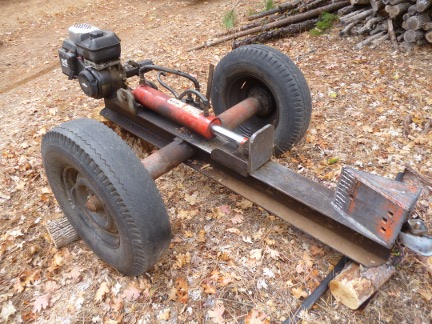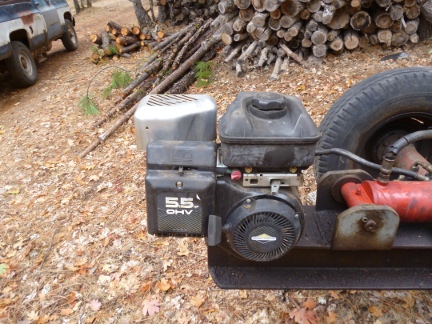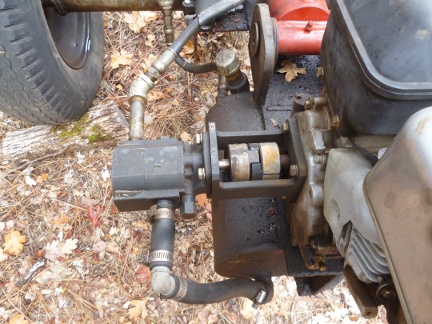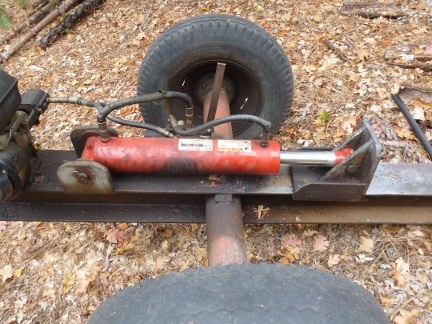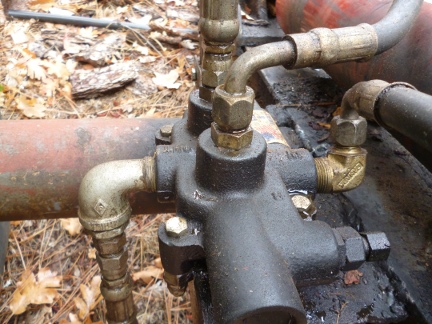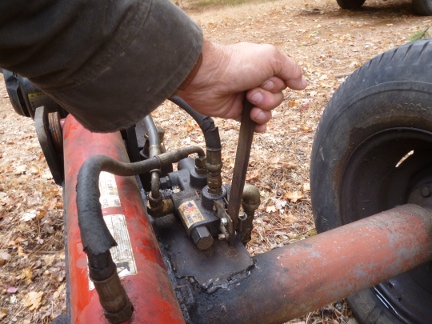Evolutionary Research
October 14, 2012 I must imitate antiquity not simply to reproduce it, but in order to produce something new..."‒ Coluccio Salutati quoted in Lauro Martines' The Social World of the Florentine Humanists, 1390-1460. In order to optimize one's chance of success in an engineering project, it's better to do something old in a new way, or to do something new in an old way. The history of invention seems to indicate that trying to do something new in a new way rarely turns out well. Accordingly, we take an evolutionary approach to research; i.e. we get to know a basic, straight-forward example of the sort of system we want to work toward, learn what we can about that initial system, and then build on what we learn. A current example is the evolution of our wood splitter into the biomass compressor.
We bought our wood splitter about ten years back. It was a home-built unit that I liked because it was much stronger than it needed to be. The demands of the market place are such that consumer-market units are generally made with as little metal as they figure they can get away with. Such units are often only expected to work for a season or three, whereas we wanted a machine that could be maintained and used indefinitely. Gradually, we've renewed the core components, replacing the engine one year, the hydraulic pump another year, and this summer Andrew replaced the hydraulic cylinder and valve. Doing these repair/upgrades not only made it possible for us to continue using a piece of equipment that's a delight to work with, it also served as a prime educational opportunity to learn more about the various components involved‒knowledge that we'll be using to good advantage as we create our biomass compressor. Our wood splitter has many parts in common with the biomass compressor such as:
An example of an ordinary difference between the two systems is that while the wood splitter uses a single hydraulic cylinder to do its job, the biomass compressor uses four cylinders, one to drive each stage. Adding more cylinders involves the incorporation of a good deal more plumbing, but that's a fairly straight forward extrapolation from the simpler system. That isn't to say that there aren't important details to incorporate in that step towards greater complexity because there are. For example, it's important to remember that the high pressure side of the biomass compressor needs to use fittings and hoses that are rated for the pressures involved‒pipe fittings from the local hardware store aren't appropriate for high pressure lines. On the other hand, they're fine for the non-pressurized lines that returns the hydraulic fluid to the holding tank.
If you look closely at the picture above, you can see that there are different types of fittings on each side. On the left, there's a standard, two dollar cast iron pipe fitting for the unpressurized return line‒such fittings are not expected to handle more than about 150 psi. On the right, there's a twenty dollar hydraulic fitting for the incoming pressure line which has to be able to handle the 2,500 psi coming out of the valve. What is a notch up the evolutionary scale is the use of four hydraulic cylinders to drive the two pneumatic cylinders used in stages one and two, and the two hydraulic cylinders to drive two other hydraulic cylinders in stages three and four. The more evolutionary step lies in the use of a microprocessor to coordinate the operation so that the biomass compressor can operate in a "hands off" mode. In the case of the wood splitter, the need to use a hand to operate the hydraulic valve is a safety feature since a hand on the valve control is a hand that's not in a position to be injured by the working end of the log splitter.
In the case of the biomass compressor, we don't want our hands, or any other part of our bodies, near the unit when it's operating. Once we have it thoroughly tested and proven, then being around it when it's working will be more reasonable, but for now we have many things to learn, and we're cautious because not all such lessons are the nice kind. |
